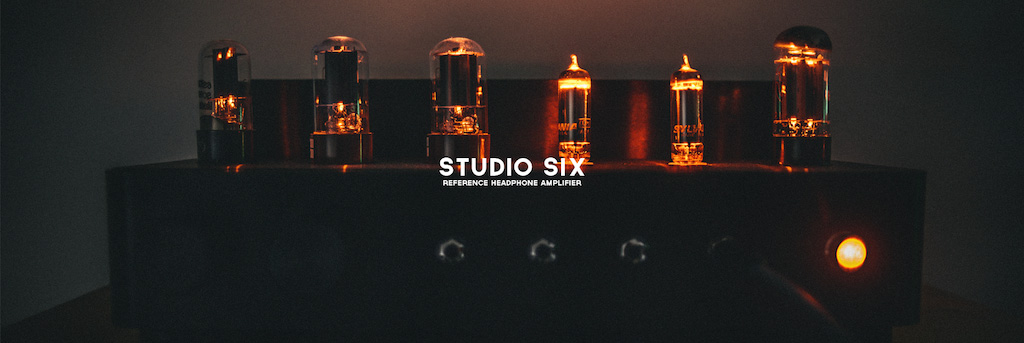KURO was a surprise hit at Fujiya’s 2013 Spring Headphone Festival. It surprised, me. It surprised Gen Kanai. Since then, KURO has become one of my favourite open dynamic earphones. Gen was already one of my favourite headfiers.
Unsurprisingly, Mr. Yamagishi is also a favourite designer of mine. He smiled in his quiet way as I complimented his acorns and picked up KURO with an effusive grin all my own.
Spec
Transducer: 010e002 Φ10 mm dynamic x 2 (per channel)
Prime technology: Twin equalized element
Output sound pressure level: 104 dBSPL/mW
Frequency characteristics: 3,5 to 35 kHz
Max. input: 400 mW
Impedance: 18 Ω
Weight: About 17 g
Plug: Φ3.5 mm gold plating stereo mini-plug
Cable length: 1.2 m (type Y)
Accessories: Comply-foam ear tips T-200 size L (Size M is attached to the main unit.)
Ocharaku tea tin, cloth, Instruction Manual & Guarantee
Flat4-KURO goes for 42.000¥.
ohmage: unlimited
Unlike KAEDE, KURO is housed in aluminium. Aluminium can be extruded, filed, and polished till Kingdom Come. Manufacture anomaly? Bosh. KAEDE, as beautiful as it is, is on its last run. The metal KURO could go on forever. That’s a plus in my books.
porridge: comfort and fit
KURO, like all Flat4 earphones, is a dangler. It’s two massive, Frankenstein bolts that plug, rather than nestle, into your ears. One sidewise fall and it’s lights out.
Some intrepid, elf-eared types will be able to wear it with the cable going north, over the ear, but most people will find that hanging the cable down is the best way to wear KURO. There still is no neck cinch to keep the earphone cable from flopping around and transferring subtle nipple noise up to your ears. As an open design, it doesn’t block out much noise at all. I turn the volume of my amps and iPods up considerably when out and about.
Maybe it shouldn’t be considered a portable earphone. On a train, it is infinitely easier to use than a Final Audio Piano Forte is, but neither one really was made for use in the great wilds of the city.
As a home earphone, those qualms melt away. Perfect- unless you live above a karaoke parlour, in which case, you will need something else.
ohmage: kitsch
Despite having made crazy speakers and headphones in the past, Mr. Yamagishi has a good sense of style. At the centre of his business is tea. You can’t get any less kitschy than tea. KURO’s tea tin carrying case, supple practical cable, and legible fonts lend themselves positively to Ocharaku’s image. It’s a return to true Japanese aesthetic, not the terrible jerrybuilt after war designs that hold sway from Toyota to basically everything at the grocery store.
ohmage: build quality
Considering KURO’s open nature - not to mention the fact that it comes packed in a tea tin - it’s fair to say that it isn’t an active-use earphone. Footsteps and purposeful swats will elicit small, low-pitched thumps to the ear, but overall, touch noise is minimal. The cable is anchored firmly into KURO’s body and a thick rubber nub protects it from cleavage. That’s the good stuff.
Somewhat poor stress reliefs are plugged into the y split and 3,5mm jack. But they are no worse than any Flat4 earphone.
porridge: quality of finish
The main gotcha is the phase correction tube and the aluminium barrel, which are extremely prone to paint chipping. My loaner is now speckled by the grey, aluminium sheen. The phase correction tube will be the first to show signs of wear. The barrel will come next. But mark my words, both will chip.
ohmage: sound
As a family, Flat4 has a very similar sound: full bass, tight mids, spacious soundstage, and somewhat strident highs. KAEDE and KURO are the crowning achievements in this series.
Crispness
KURO follows KAEDE’s footsteps, providing clear mids and, generally, smooth transitions from upper mids to highs. KURO throws impressively wide instrument splays and central, well-grounded bass. It is never anything but crisp.
Space
KURO’s stereo width and out-of-head performance aren’t typical of in-ear earphones. The sound they produce is reminiscent of large, open-backed headphones. Of particular note is the vocal band. It’s clear and forward. Cymbals shimmer in at the sides and fade away to blackness; bass rumbles up from below, in a chamber all its own. Rhythm guitar, piano, and violin vibrate at the sides. Despite each element being infundibulated into the same canal through a narrow, plastic tube, the sound is very open and organic.
Speed
Generally, KURO keeps up with all genres of music. Even the hard edges of speed trance and thrash metal retain crispness. Cymbals shimmer doesn’t hang on too long and drums attack in quick strikes, then let up. And drums are amazing.
Bass vs. Mids
KURO’s mids, while sweet, err to a sense of space and clarity rather than sappy acoustics. Bass, with its slightly higher sound pressure, is forefront in comparison- not in a thumpy way, though. Bass is über detailed and boasts the single most sonorous resonance that I’ve heard in an IEM to date.
Bass vs. Highs
Both bands are energetic. KURO is less fatiguing than SUI is, but it isn’t an all-day, easy listening earphone. Listeners who favour earphones with strong treble presentation will fall in quickly with KURO. Newcomers may need time to acclimatise their ears. The contrast between bass and treble isn’t stark, and mids don’t get pushed down. Because of the amount of detail KURO’s bass offers up, duff-bassheads may find KURO to neither nor there. The presentation is audiophile first, big second.
KURO friendly genres
With speed, space, and detail at its beck and call, KURO can storm practically any musical castle. Sweet spots are female vocals. Jazz, Piano, duets. Nicki Parrot, Melody Gardot, Fatoumata Diawara: these ladies’ voices enchant to no end. Toms: dear god, queue up your drum solo and drool.
I find myself reaching for KURO more often than any of my full size headphones when I’ve got jazz and vocal in the ear. Scratch that- for vocal music of any genre. Where KURO has dirt: the gap between cymbals and the highest vocal, there is a bit of soft compression. 80’s cymbal-heavy post-glam rock: Def Leppard, The Scorpions, etc., can sound etchy.
KURO’s balance of richness and detail is superlative; its command and contrast of intimacy and width is addictive. Excepting KAEDE, there’s no earphone out there like it. I don’t expect to see either en masse on the used market. If anything, Ocharaku have created an earphone that will be pampered and loved more than one’s own baby.
KURO happily joins the ranks of my favourites: Gen Kanai, Marinoni, Yasaka, asparagus, and Birkenstock. But Gen, I’m sorry to say, that there’s about to be a switcheroo in spot # 1.
ohmage: 4
porrige: 2




























